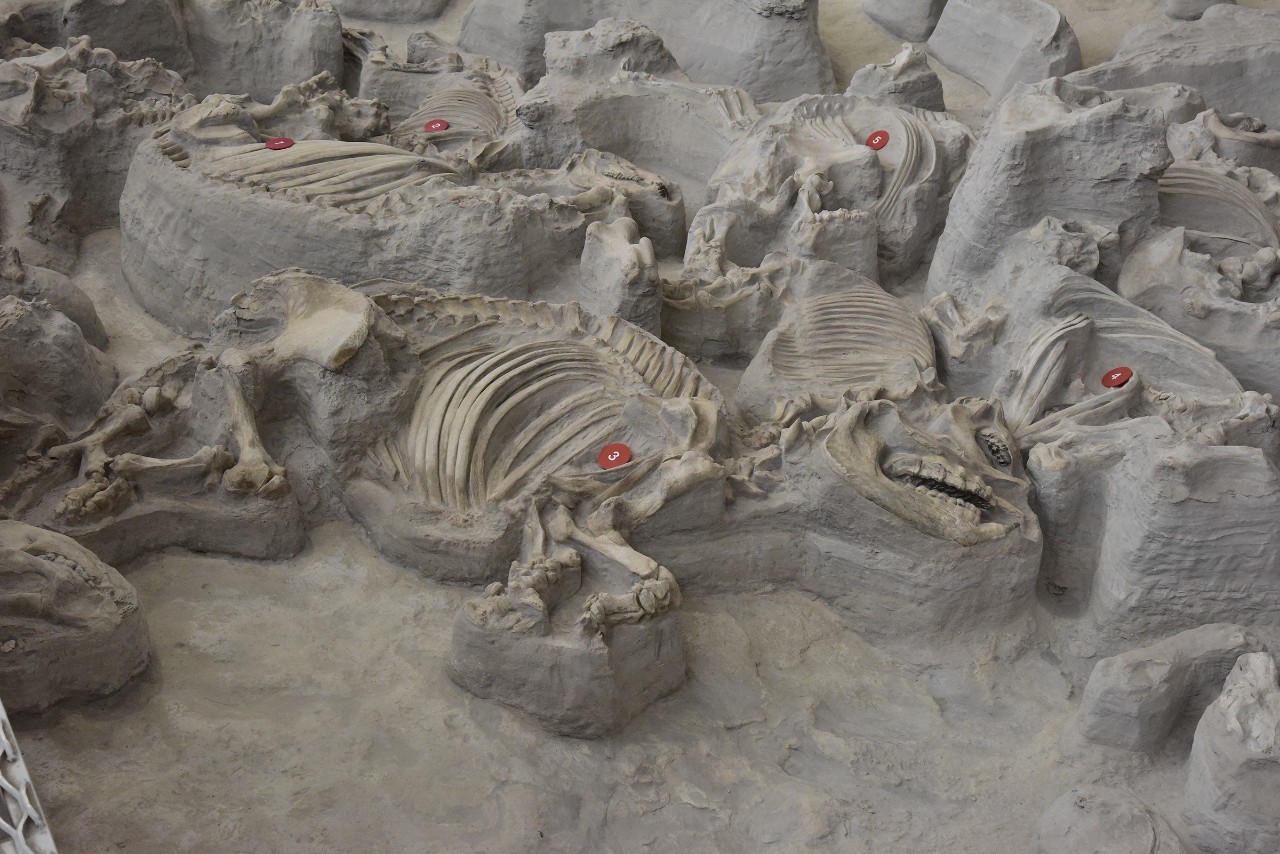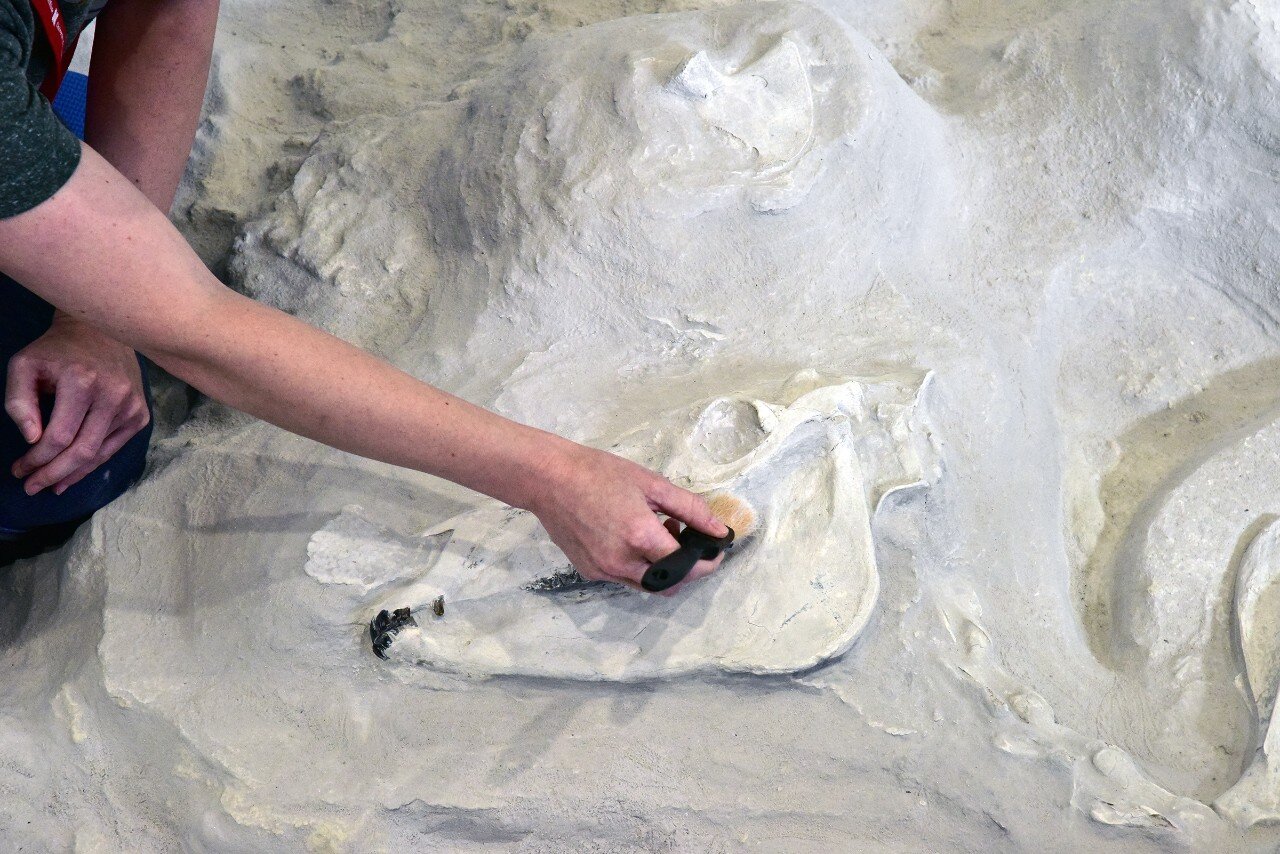Modern-day rhinos are native to parts of Africa and Asia, but millions of years ago, they lived in North America, including what is now Nebraska. During the Middle Miocene, a species known as Teleoceras major thrived across the continent.
Recent studies of their fossilized remains, particularly from northeastern Nebraska, have revealed that these prehistoric rhinos lived in large, non-migratory herds. The research, published in Scientific Reports, suggests a social structure similar to that of modern hippos, which also live in dense groups and remain tied to local water systems.
1971 Discovery of Rhinos’ Remains Reveals Sedentary Herds and Limited Movement Behavior
The key evidence for these conclusions came from a 1971 discovery at the Ashfall Fossil Beds in Nebraska. Researchers unearthed the remains of over 100 T. major rhinos near a dried-up waterhole. These animals were preserved in volcanic ash, believed to have come from a massive eruption in Yellowstone roughly 12 million years ago. The unusual concentration of skeletons raised questions about whether the rhinos had gathered in response to the disaster or were already living there as a community when the ash fell.

To solve this mystery, scientists analyzed the isotopes in the rhinos’ teeth, which contain chemical signatures of their diet and movements. The data revealed that T. major rhinos had very limited movement and did not migrate seasonally. Their sedentary behavior aligns with their physical build — stocky, hippo-like bodies that were better suited to staying close to water sources than traversing great distances. The findings supported the idea that these animals lived in established herds around stable water systems.
Prolonged Ash Exposure Led to Rhinos’ Death and Revealed Ancient Environmental Conditions
Although they weren’t directly killed by lava or blasts, the rhinos were doomed by the fallout. Ash from the Yellowstone eruption drifted hundreds of miles, eventually blanketing the Nebraska landscape. It contaminated water and covered vegetation, leading to a slow and agonizing death for the rhinos through starvation and respiratory issues. Unlike the sudden destruction of Pompeii, their end came from prolonged exposure to toxic ash and the disappearance of their food supply.
Beyond behavior, the isotopic analysis also helped scientists reconstruct the environment in which the rhinos lived. Carbon isotopes gave insight into the types of plants in the area, while oxygen and strontium provided clues about rainfall and soil composition. These details not only help paint a picture of the Miocene ecosystem but also offer a personal connection for researchers like Clark Ward, who grew up visiting the Ashfall Fossil Beds and later contributed to the site’s scientific legacy.


